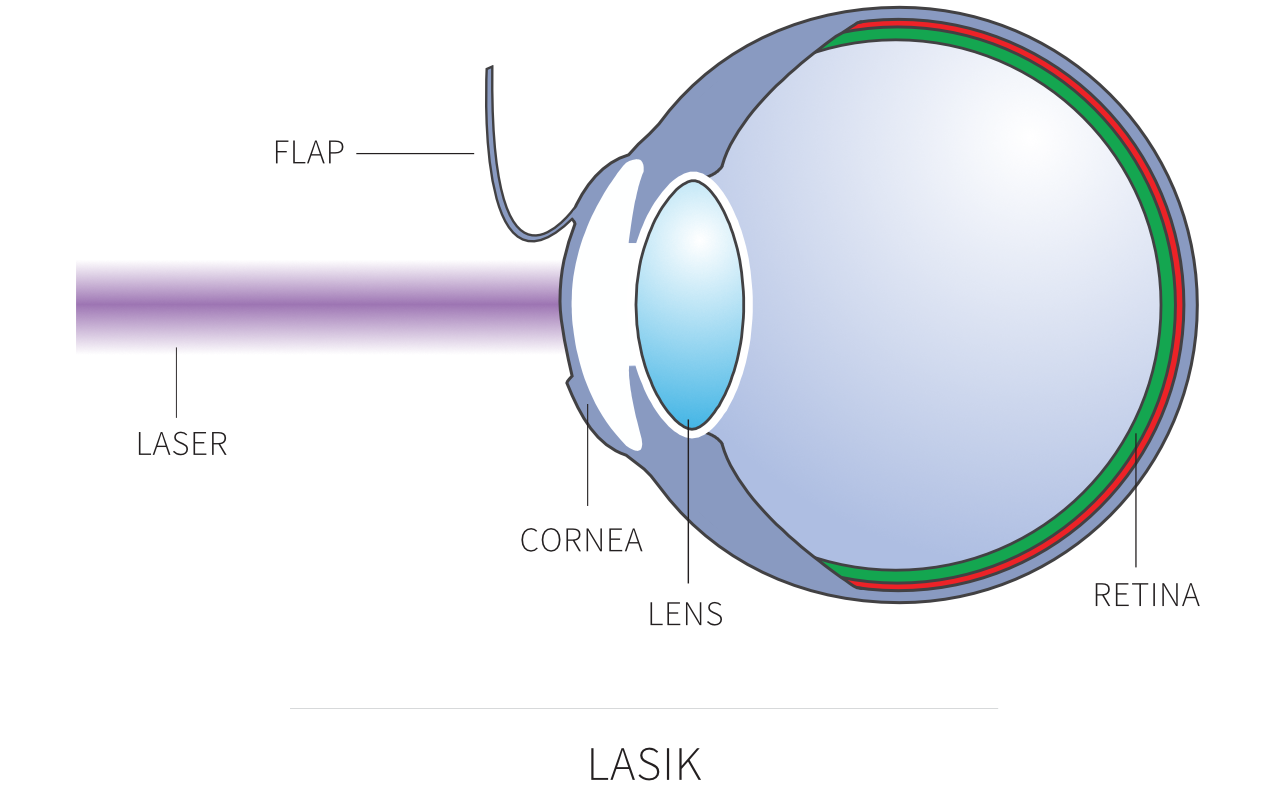020 7490 7222 Book an appointment
LASIK stands for laser-assisted in situ keratomileusis. It is the most advanced, safest and most accurate form of laser eye surgery today to correct short sight (myopia), long sight (hyperopia) and astigmatism.

Originally laser eye surgery was carried out by moving a layer of cells away from the cornea (epithelium) – this was known as PRK. It provided groundbreaking results at the time but was not the most comfortable of procedures. Following on from this LASIK was developed where a flap is created and the cornea then reshaped by an excimer laser to correct vision. Initially a small blade known as a microkeratome was used to create the flap. Laser eye surgery at our clinic is now a completely blade-free process thanks to the advent of the ‘femtosecond’ laser.


LASIK is a two stage process – the first part of the procedure involves a small flap being created by a femtosecond laser. The flap is then folded to one side by the surgeon and the second stage of the process is carried out. Here the excimer laser remodels the cornea to correct the patient’s vision. An eye tracking system follows the eye at around 4000 times a second which provides a very safe and accurate treatment. The flap is then placed back and the procedure is complete.
Patients are given standard eye drops (anti-inflammatory, antibiotic and lubricant drops) which are used every 2 hours for the first week and then in reduced doses in weeks 2-4 to ensure comfort and an optimum result. The entire process is over within 15 minutes and results are usually apparent immediately.
Today the technology is so advanced, the skill of the surgeon so precise and the understanding of the procedure so thorough, that results are really life changing for patients. The primary concern for any surgical procedure is safety and this is where LASIK offers reassurance. There is greater predictability and stability in the outcomes for short sight (myopia) up to -10.00D and long sight (hypermetropia) up to +5.00D. Both eyes are treated on the same day and the time taken to correct the vision is very quick. Many patients even return to work the next day!
The use of the femtosecond laser and innovations in the excimer lasers used in laser eye surgery also mean that there is no corneal scarring involved in treatment. Visual recovery is now extremely quick – sometimes within hours.
No eye pads are needed after the treatment, only eye shields for sleeping during the first week, and the only necessary aftercare consists of drops administered by the patient. Technologies such as Wavefront and Iris recognition ensure that safety and accuracy are paramount at all times.